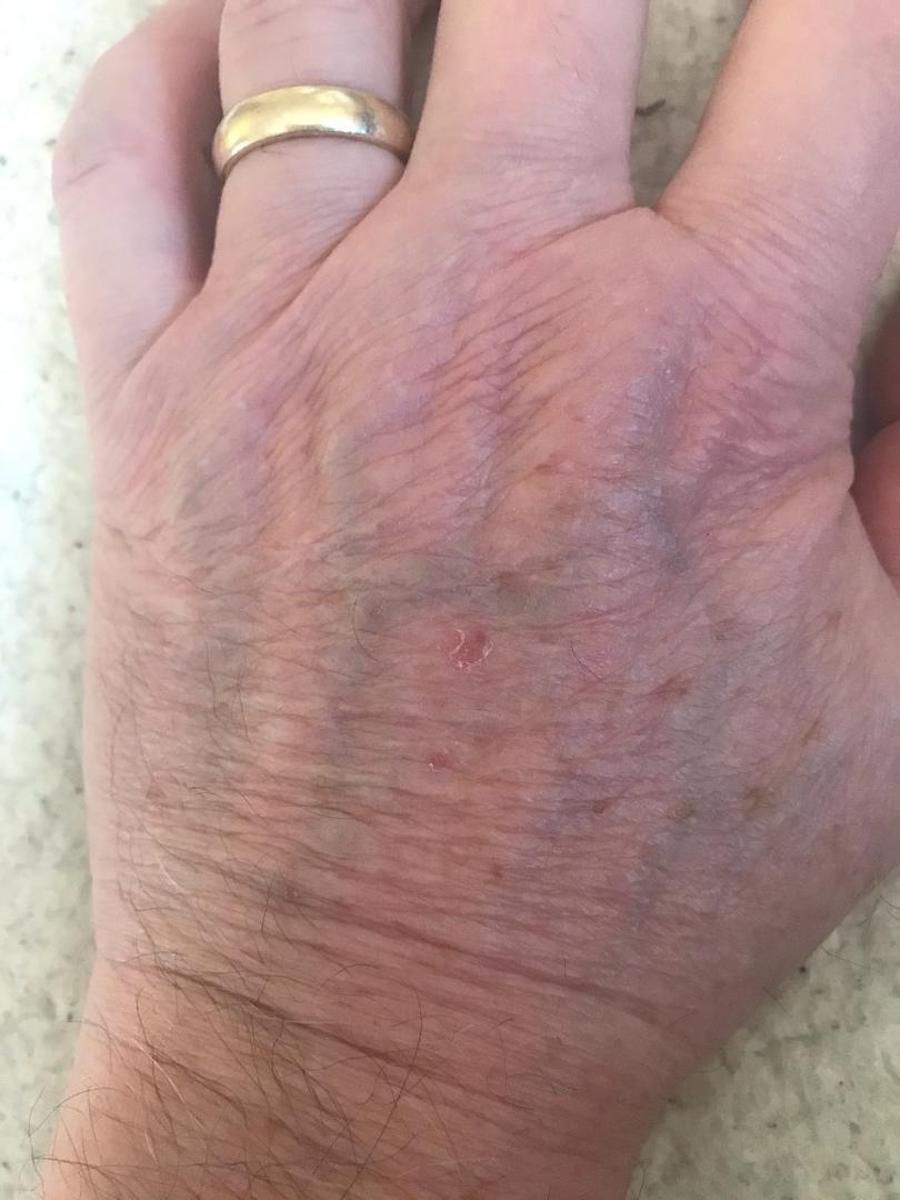I look at the back of my hand and I see veins running under a splotchy, thin skin. It is the hand of an old man.
I know I am 70. I know this is normal, just as I know that a decline in brain function is normal. Yet I want my brain to look and act the same as it has for the past 50 years. I reject splotchy thinking. I bristle at the errors I am noticing with increasing frequency. Even though this might be normal, I don’t like it.
It happened for the first time the other day. I was putting things away after dinner and I put the butter on the upper shelf of the refrigerator. Only problem is that we keep it in a covered compartment on the refrigerator door. I caught the mistake as soon as I made it, but something tells me that this wasn’t the last time that this will happen.
We don’t have a regular set of dinner dishes. Instead we have an eclectic collection of dinner plates. I was looking for the ones with the colored dots design and couldn’t find them. Did the housecleaners move them? They have their own sense of fengshui and we find all sorts of things have been re-purposed after their visits. Instead of going down that path, though, I asked Sally if she knew where they were. As we talked, I recalled that some plates had chips in them. Did we throw them out? Sally remembered our conversation about throwing them out, but neither of us could say for certain that we did. I’m going with the ‘we threw them out’ theory.
At Sally’s request, I haven’t cut my hair since COVID hit a year ago. It’s now ponytail length and so she gave me one of her hair ties. I used it the other day when I went out and took it off when I returned. Later, when I had to go out again, I couldn’t find it. I looked all over. Sally gave me another one. Later that night, when I undressed for bed, I found the original one. It was on my wrist, hidden by my long-sleeved shirt.
I was walking on the track at the YMCA and I got to thinking about impressionist art. I set about trying to remember who it was that painted scenes of Tahiti. It didn’t come to me easily. I knew it wasn’t Van Gogh, Mary Cassatt or my favorite, Renoir. Not Seurat, Monet or Manet. Not Pissarro. I went through the alphabet to see if that would trigger a name, but that didn’t help. I visualized one of his paintings. I recalled a scene from the movie ‘Goodbye, Columbus’ where Richard Benjamin gives the name to a young black boy in the stacks of the Newark Public Library. It took about 10 laps around the track, but it finally hit me: Gauguin.
When I got home, I googled ‘major impressionist artists’ to see how many artists I knew whose names did not occur to me: Matisse, Cezanne, Degas, Toulouse-Lautrec. That means I was able to conjure up 8 out of 12. I think that’s a pretty good percentage. Ask me again a year from now.
When I drive somewhere, I take a moment and look around to lock in my location after I park. So far, I haven’t lost the car once!
I turned on the tap in the upstairs bathroom sink, reached into the medicine chest and took out my toothbrush and toothpaste. There was nothing wrong with that…except my intent was to shave, not brush my teeth.
And that, my friends, is what a splotchy brain looks like.
Post script: I think I really dodged a bullet in the tale of the missing dishes. In dementia, it’s very common to fabricate explanations when your memory fails in order to fill in the gaps. A brain, like nature, abhors a vacuum.
Paranoid explanations are quite common. Instead of concluding that I must have thrown them out because they were chipped–even though I don’t recall doing so–I could have decided that the housecleaners stole them. Or that a thief or neighbor had come into the house at night and taken them. If you told me that didn’t make any sense because no one would steal 2 chipped plates when there are plenty of better ones right there for the taking, I would argue with you, confabulate another rationalization, stick to my guns…and wonder why you were being so difficult.
If/when I start doing that, I will have traveled well beyond splotchy on the road to nowhere.
_________________
Join me on the journey! Just enter your email address here to receive notice of new posts:

